BWFolsom/iStock/GettyImages
While many people people love their mild and fresh-tasting flavor, some simply cannot take the heat of jalapenos. The heat, or burning sensation, from all chile peppers comes from a chemical called capsaicin. This substance occurs naturally in chile peppers at varying strengths and is not affected by the heat from cooking. Reduce the perceived heat of a hot pepper with a few techniques.
Remove Seeds and Veins
The majority of the capsaicin in a pepper resides in the seeds and veins -- the white membrane on the inside of the pepper. Substantially reduce the amount of heat in a pepper by removing this portion. Use a small knife -- a sharp paring knife works especially well -- and slice the pepper open. Cut off the stem, then lightly drag the blade of the knife along the insides to scrape off the seeds and any white membrane.
Add Dairy
Dairy products -- such as milk, cream, sour cream and yogurt -- contain a chemical called casein. This fat-binding chemical readily binds to capsaicin and helps to wash it away from the nerve receptors in your mouth. This will not remove the burn entirely, but will allow less of the capsaicin to reach the nerve receptors in your mouth when eating a dish made with jalapenos. If the flavors of your dish go with dairy, add it directly to the dish and taste it to determine whether the heat is tolerable. Or serve a dairy beverage or cocktail -- such as milk, a milkshake, a yogurt-based smoothie or even a white Russian -- to help reduce the burn.
Fight Fire With Acid
Capsaicin is an alkaloid, which can be somewhat neutralized by adding an acidic substance. A number of acidic edibles can do the job, but a few especially complement the flavor of dishes made with chilies. These include lime juice, lemon juice, vinegar and tomatoes. Add any of these ingredients right in to the dish you plan to make to reduce the burn of the jalapenos.
Add Sugar
Sugar can also chemically neutralize the effects of capsaicin. In fact, the Scoville Scale, the scale used to measure the heat intensity of chilies, was originally based on how much sugar water was needed to counteract the burning sensation felt by the human tongue when eating a particular kind of chili. Utilize this same principle by adding sugar to your dish to reduce the amount of heat from the jalapenos. Use it judiciously so you don't make the dish overly sweet.
Replacements
Jalapenos fall somewhere in the lower middle on the heat scale. For less intense taste, replace some or all of the jalapenos in your recipe with an even milder pepper, such as Anaheim and poblano peppers. Replacing jalapenos with a different pepper, however, may change the flavor of your dish slightly.
Related Articles

How Much Hotter Is a Habanero Than a ...

Can I Eat the Seeds of a Habanero ...

What Is Chipotle Seasoning?

Hot Pepper Oil & Skin Burn

Does Cooking a Habanero Pepper Make It ...

Does Fire Roasting a Jalapeno Make It ...

Habanero Peppers & Itchy Skin

Substitutes for Scotch Bonnet

Can I Replace Cumin With Chili Powder?

How to make Stuffed Jalapeno Peppers ...

Substitute for Thai Chili
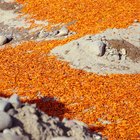
Peruvian Cooking Spices

Remedies for a Jalapeno Skin Burn

How to Neutralize Food Seasoned With ...
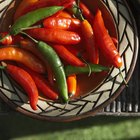
Cooking Substitutes for Chili Powder
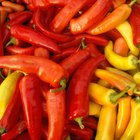
What Peppers Have Capsaicin?
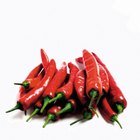
What Neutralizes a Hot Pepper Burn?

How to Make Cayenne Pepper Sauce

What Can You Do to Tone Down Curry ...
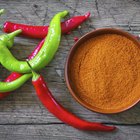
Ancho Chili Powder Vs. Chili Powder
References
Writer Bio
Kurt Schrader has been writing professionally since 2005. He has also worked in the hospitality and travel industries for more than 10 years. Schrader holds a bachelor's degree in management, a master's degree in information studies and a Juris Doctor from Florida State University.